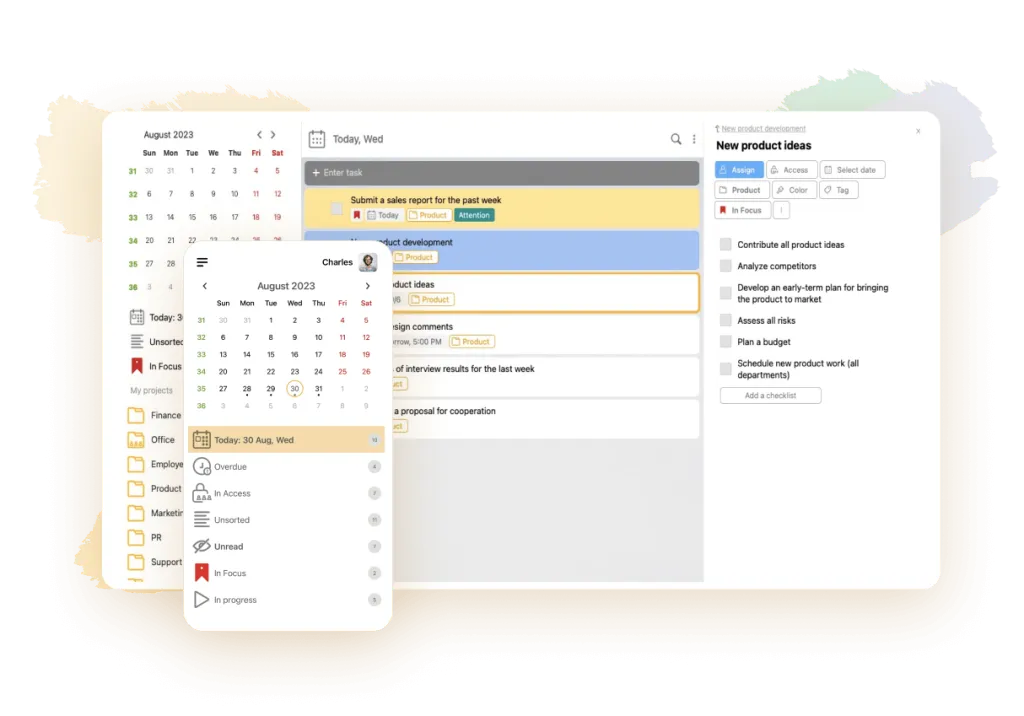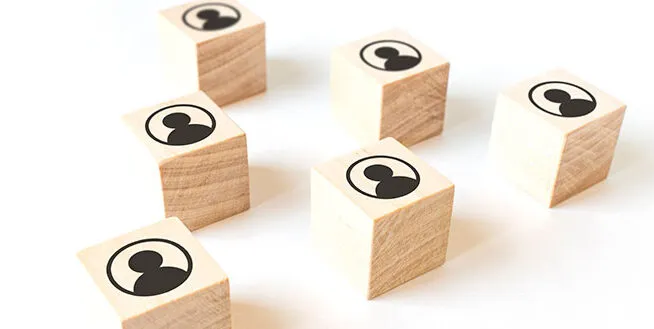
Ted Scott
November 21, 2023
In 2023, the profession of product manager is rapidly gaining popularity. Many serious companies, especially in the IT sector, need qualified specialists responsible for creating a product and promoting it on the market. But, since this specialty has appeared relatively recently, there are periodically misunderstandings about what duties a product manager performs. In addition, this position is often confused with project manager or product owner.
Let’s try to understand what skills and competencies you need to have in order to master this profession, because product managers are not trained at universities. What areas of business, apart from IT, you can work in, and how to become a real pro at it.
Who is a product manager and what does he do in a company?

Product manager is a strategist who manages all the processes involved in the creation of a product. He is involved in its planning, development and launch. He continues to work on the product after it is released on the market, developing it, providing technical support. This is not only a manager, but also a creative, programmer, marketer, analyst, designer. He generates ideas, ensures their implementation, makes reports on the product to analyze and improve business processes. The nature of his tasks and responsibilities directly depends on the specifics of the company’s business.
If you are applying for the position of a product manager, be sure to pay attention to the list of requirements for the position in each specific case. For example, in one firm, this person is responsible for generating ideas on his own, while in another, he only monitors the implementation of the chosen strategy.
The career of a product manager starts at the bottom rung of Associate Product Manager, which is most often occupied by developers, project managers, marketers, and system analysts working in an organization. People “from the outside” and newcomers without relevant experience are reluctant to take the position. Therefore, a number of large companies organize specialized courses to train product management specialists from scratch.
In the process, junior product managers solve the problems assigned to them. For example, a manager notes a low conversion rate for paying for an order in a food delivery app (compared to similar products on the market). The reason behind the problem: inconvenience in entering card data. It can be solved by implementing payment via Apple Pay or Google Pay. The task of the product manager is to develop a convenient interface together with the designer, control the development process and implement the new solution in the software product. In principle, a project manager performs similar tasks, but his competence is limited to releasing updates to production. An Associate Product Manager solves the problem set before him. Therefore, after the release, he monitors analytics and makes sure that the task has been solved correctly, conversion has increased, and users have no difficulties in using the application.
As the Associate Product Manager accumulates experience in the course of solving various business career tasks, he “grows” to a real product manager. He is well versed in his chosen field and the characteristics of the product. He is aware of all the work processes taking place in the team, knows in what direction the team is moving and what goal it is trying to achieve. Independently makes decisions concerning the product. A project manager always acts according to an approved plan. For example: a company plans to erect a building. He is obliged to build a house with the characteristics specified in the plan by the specified deadline.
Significant differences between a product manager and a project manager:
| Product | Project | |
|---|---|---|
| Tasks | Responsible for ensuring that new product is fully compliant with customer requirements. | Manages team activities, plans sprints, writes the terms of reference. |
| Role in the team | A startup who is well versed in his field. | Coordinator, managing deadlines. |
| Stages of work | Develops, tests, launches new product. | Provides intermediate and final work results to the customer. |
| Daily to-do list | Resolves ongoing issues related to product release, troubleshoots problems hindering business development, discusses new challenges with the team. | Evaluates the current status of the project, identifies development issues. |
| Performance result | Launching the finished product into production with further refinement after release. | Creating new work methods and processes. |
Product and project managers work together to accomplish tasks in teams to get the best results. Only the former are different in that they focus on the product itself, while the latter deal with resource management, scheduling, and budget allocation.
Skills and responsibilities of a product manager
It is the responsibility of the Product Manager to be actively involved in every product development cycle:
-
Idea Presentation. It should create and properly tell, convey the concept of a new product.
-
Determines the needs and preferences of future users of the product. For this purpose, various studies are conducted to identify the positions of target audience segments in different age categories, with differences in socio-demographic status. With the help of the information obtained, a portrait of the future user is drawn up.
-
Integration of ideas and product vision of all line managers of the company. For this purpose, discussions are held within the team. They clarify how much time the executives need to design a digital product, and what exactly will be of interest to users in the new application. After analyzing fresh ideas and hypotheses, the tasks for the next sprint are adjusted.
-
Elaboration of the path, overall vision and main directions for the development of the product or service. Preparation of a specification with requirements for it. It specifies what kind of product it will be, what goals it pursues, how the success of its launch will be measured.
-
Creating a project roadmap that prioritizes product management in line with the company’s business objectives. For example, some projects prioritize the speed of hypothesis testing.
-
Control over the work of developers and designers. A product manager monitors their activities, identifies emerging difficulties in a timely manner, and takes measures to improve work processes. For example, if the team fails to deliver work on time, hire another developer. Most product teams are based on Agile technologies. Their work is divided into sprints, at the end of each of which the product should receive a new artifact, some small innovation that has real value. For example, a new button, a feature, a user interface improvement.
-
MVP testing - minimum viable product (the name comes from the principle of Minimal Viable Product). Product Manager evaluates its effectiveness, looks for upgrade opportunities, analyzes sales and marketing averages, and interviews customers. It collects user stories together with developers: what difficulties they had while using the product, what buttons they pressed, what tabs they clicked, what features they didn’t use. Based on the data received, tickets are created - the tasks the team will work on.
A product manager works closely with developers, designers, copywriters, management and investors of the company. It is important for him to have certain knowledge, qualifications and skills to perform his duties successfully. Get an idea of what a product manager does from the hard skills and soft skills of the profession.
Professional Competencies:
-
Ability to work with a variety of information gathering techniques.
-
Basic knowledge of development and technology.
-
Analytical experience in studying competitor strategy.
-
Understanding user needs and preferences.
-
Ability to competently set goals and product development plans.
-
Actively work to maintain and further promote the product line in media and other channels.
The soft skills of a product manager include:
-
Developed communication skills. Creation of any product implies active interaction with the team and other stakeholders. Therefore, the product manager must correctly convey to each performer the essence of his task, be able to defend and justify his point of view. But, at the same time, he must hear others.
-
Ability to resolve conflicts, support a friendly atmosphere in the team.
-
Critical thinking. Having this skill helps to make the right decisions based on analyzing the information received, establishing the relationship between the facts.
-
Ability to adapt quickly to any conditions and situations, to sense moments when a project requires urgent adjustments.
In addition, a product manager should develop such qualities and character traits as curiosity for everything new, desire to learn, develop outlook, responsibility and creativity. He should be disciplined and organized in work and life. For this purpose, it is necessary to master the best techniques and methods of time management.
How a product manager’s performance is evaluated
The work of a sales manager is evaluated by internal and external criteria. Internal factors include the interaction within the team: how its members communicate with each other, how satisfied they are with their work, and how communication between performers is structured. If there are favorable partnerships in the team, everyone is committed to the common achievement of goals, and they perform their duties at a high level, it means that the product is doing its job well. Various metrics are used for external evaluation (profit, financial results, customer satisfaction and other parameters). For example, in the IT industry, a big indicator of a product manager’s effectiveness is user retention.
Project management with LeaderTask

Planning and organization of work in a team are important skills for any product manager. It’s convenient to use LeaderTask app to create, distribute tasks between performers, organize work on Agile projects. The service includes a necessary set of tools and techniques for effective teamwork. It’s a convenient, functional planner, organizer, and task manager designed to support any project.
In the app you can control the execution of tasks, track the progress of performers, monitor the progress of the project on informative kanban boards. Rationally distribute time, unite, motivate employees. Analyze the achievements of each performer to make the right staffing decisions. Receive notifications about upcoming events and changes in tasks. Competently prioritize tasks. The application synchronizes with all digital platforms, works online and offline without an internet connection.
So, we have dealt with the question of what a production manager does. This is a specialist who generates new ideas and implements them in production, who is not afraid of difficulties and is always moving forward. To succeed in this interesting, in-demand and highly paid specialty, you need to have well-developed communication, planning, strategic thinking skills. General entry into the profession is possible only with a university degree. The profile category of a vendor can be obtained at specialized courses, which are organized by many large IT schools.







